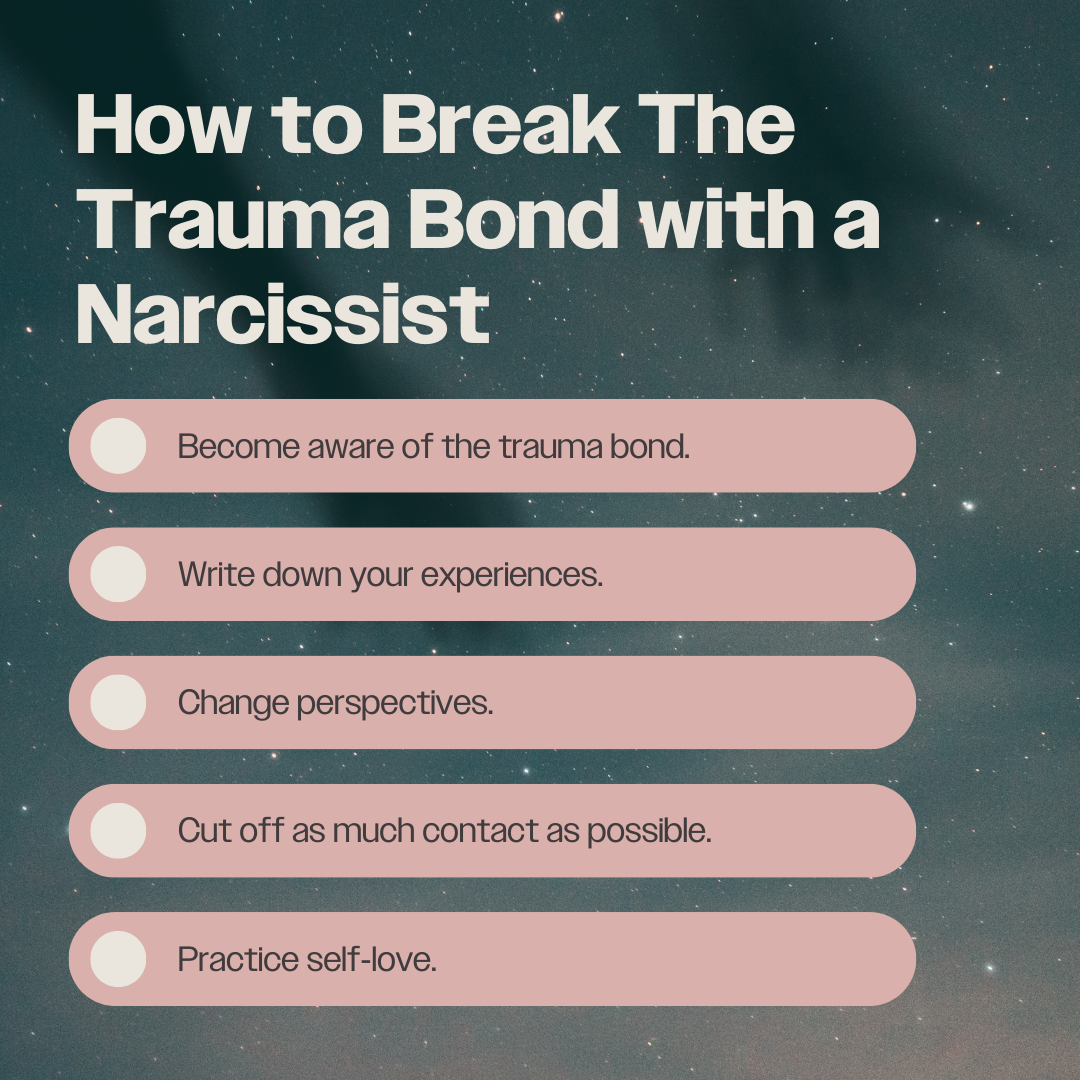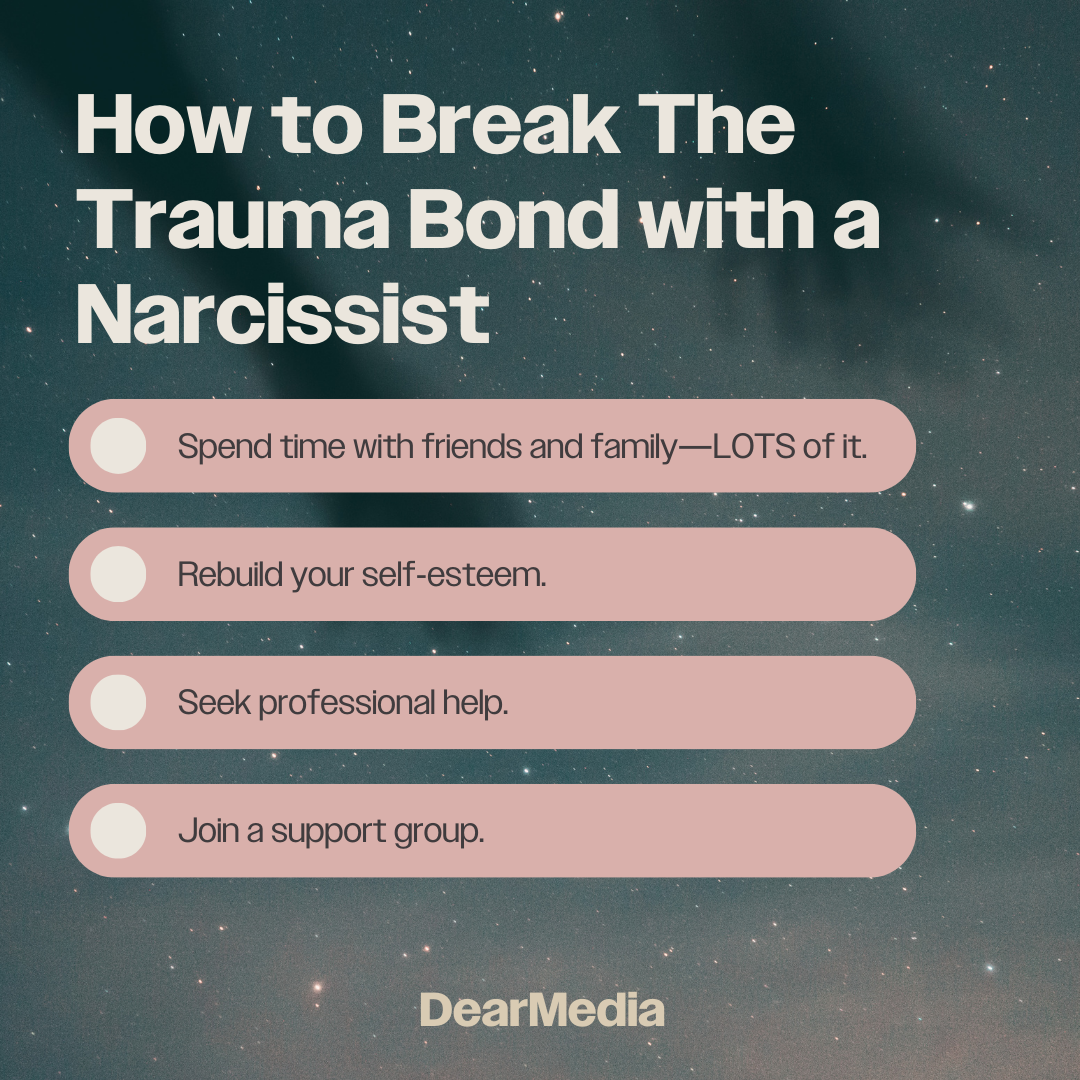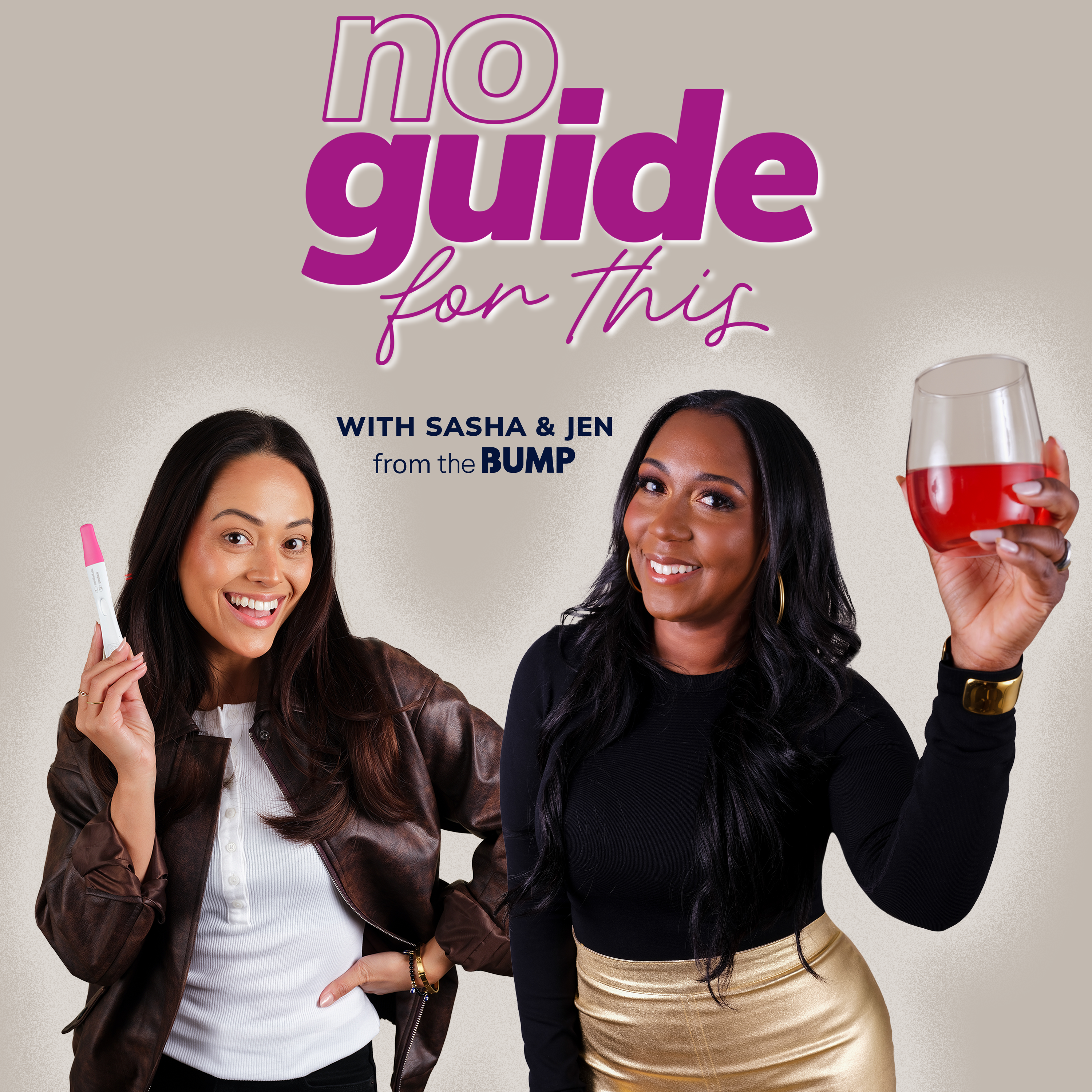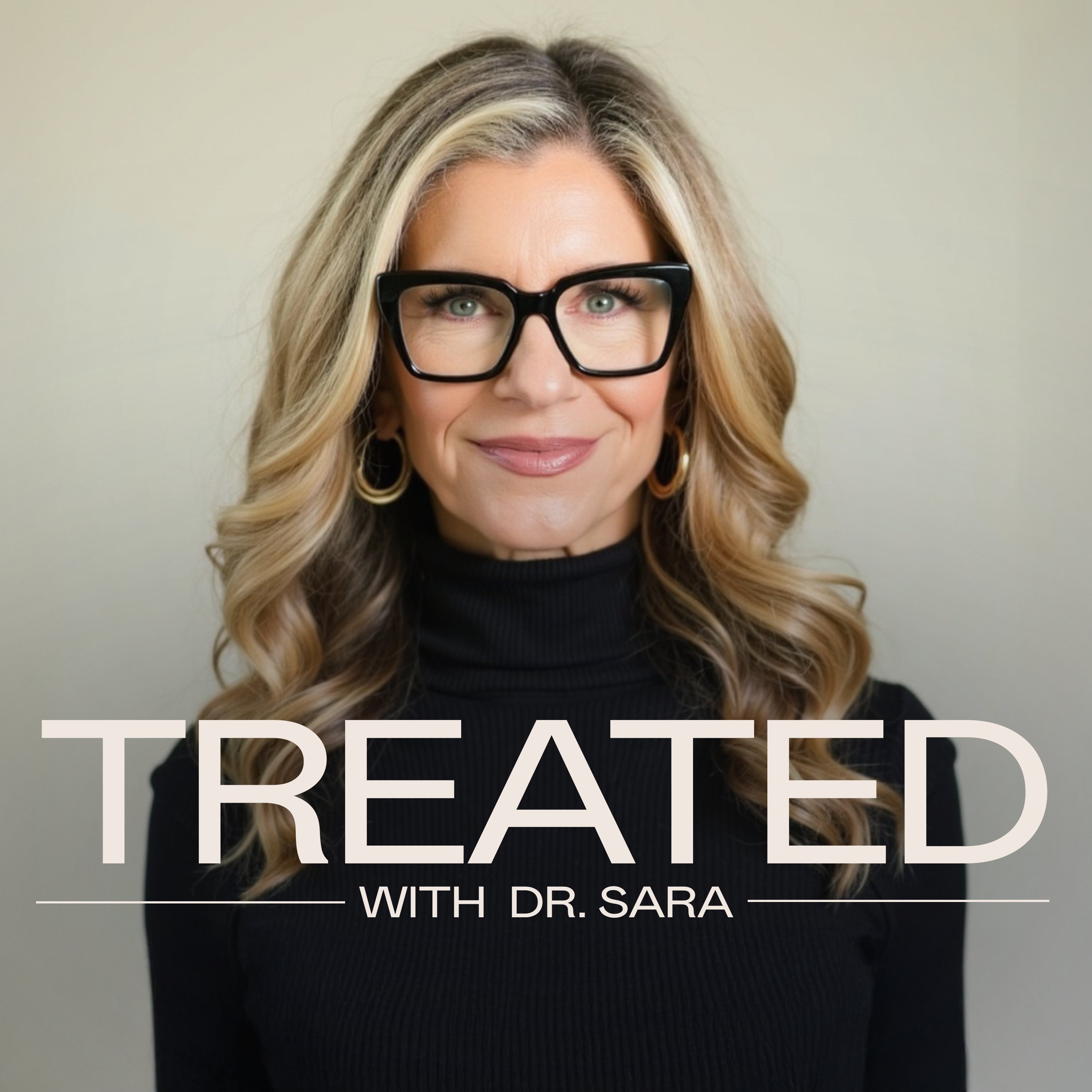How to Break a Trauma Bond with a Narcissist
Narcissists, or people who suffer from narcissistic personality disorder, are people with a serious mental health condition that involves a pattern of arrogance and self-centered thinking. Relationships with narcissists can be abusive and lead to a hella toxic phenomenon called trauma bonding.
Trauma bonding is a unique bond between an abuser and an abused person where a deep attachment forms during the cycles of abuse. These happen most often in relationships where abusers waffle back and forth between affectionate and abusive, while those being abused typically have insecure attachment styles (check out this ep of We Met At Acme to learn more about attachment styles), low self-esteem, and are lacking in boundaries.
This combo can lead to dangerous codependency that can make attempting to leave difficult. The victim’s emotions may become tangled, leaving them confused. They may believe they cannot survive without this person. But, if they are being harmed, leaving is incredibly important for their health and safety.
Does any of this sound familiar? Are you, a friend, or family member at risk for a trauma bond with a narcissist? We hope not. But, just in case you’re in this situation, we want to help. We care about you, girl! We want you to be at your healthiest and safest. That’s why today, we’re sharing a guide to help you break free of a trauma bond with a narcissistic abuser.

How to Break a Trauma Bond with a Narcissist
Breaking free from abusive relationships can be a difficult and painful process. Ending a relationship is never easy, but when you’re finding it difficult to distinguish pain and control from “love,” it’s hard to think about anything else, let alone leaving.
But, when you realize what’s actually happening, you have a chance to change it. That’s why learning what a trauma bond with a narcissist looks like is so important. You want to be able to identify the patterns and spot a narcissist early in the relationship.
What Does a Trauma Bond with a Narcissist Look Like?
A relationship with a narcissistic abuser from the abuser’s side looks like a cycle of abuse and manipulation interspersed with lots of punishments and rarely any rewards. On the victim’s side, signs of trauma bonding may look like feeling stuck in the relationship and being tense and overly cautious around the abuser. They may put a lot of effort into the relationship and get very little in return.
All of this can take a toll on the victim’s overall health and wellness, especially their mental health. You can’t thrive in an environment that is constantly beating you down, after all. Their decreasing health may contribute to them staying in the relationship. While this may lead some to assume the victim is weak, trauma bonds can happen to anyone and are not a choice or sign of weakness—they’re a natural and common response to abuse.
If you or a loved one is in this situation, don’t worry! It is possible to break out of toxic relationship patterns and free yourself from a trauma bond.
How to Break The Trauma Bond with a Narcissist
Become aware of the trauma bond.
The first step in breaking any trauma bond is to become aware of what’s happening to you. It’s important to recognize that what’s going on is a cycle of abuse, meant to hurt you just enough to keep you under control.
To become aware of your trauma bond, you need to know the signs. Here are 7 signs of a toxic person to be wary of, and the 7 stages of a trauma bond you want to be on the lookout for.
Write down your experiences.
Trauma bonding involves a lot of manipulation and gaslighting, which can make it difficult to determine what’s really happening and identify any patterns in behavior. Additionally, the dramatic pendulum of emotions can cloud your memory, making you forget the bad moments.
Writing down what happens throughout the day, every day, is a good way to begin to identify how much of the relationship is harmful, and what patterns the abuser might be using against you.
Change perspectives.
If it were your bestie in this situation instead of you, would you be so cool with them stayng in the relationship? Probably not. Most likely, you’d want them OUT, ASAP.
So, if you were giving advice to them, what advice would you give them? Be honest with yourself. Then, take that advice and run with it, babe.
Having a hard time keeping that perspective? Get this cozy Every End Is A New Beginning hoodie to remember that you are MUCH better off starting your new story!
Cut off as much contact as possible.
If you can go no contact, go no contact, girl. The more you talk to them, the harder it will be to escape the web they weave trying to get you back. Of course, we realize going no contact isn’t possible in every relationship—sometimes there’s a child or legal issues involved that prevent you from going 100% no contact.
Still, limiting your contact with the narcissistic abuser is a hugely important step to breaking a trauma bond. Narcissistic abusers are masters of manipulation and can use their charm to convince you to take them back. Yet, every time you do, you send the message that they can get away with what they did, and they will take it a step further.
Plus, in the seventh stage of the trauma bond, you become emotionally addicted to the trauma bond. Staying in contact with your abuser is flirting with your addiction—it makes it all the more difficult to get out.
It can be difficult to set these boundaries, especially when the abuser is not used to you sticking up for yourself. Here’s our article on how to set boundaries with a narcissist, or you can listen to The Papaya Podcast’s episode on Creating Boundaries & Trusting Your Intuition.
Practice self-love.
You may not know how to fall in love with yourself, but believe us, it’s possible. Why wouldn’t it be?! You’re a bad*ss bitch who deserves all the love a person can give. And YOU can give it to yourself!
Feel like you don’t know where to start? Don’t worry, we’ve got LOTS to say on loving yourself. Here are our recommendations for learning to love yourself:
- Read & repeat 100+ Affirmations for Self Love.
- Listen to House Guest with Kenzie Elizabeth tell you Why Self-Love Isn’t Selfish.
- Learn 4 Ways to Self Love from Almost Adulting with Violet Benson.
- Finish up with How To Fall In Love With Yourself! from What We Said

Spend time with friends and family—LOTS of it.
Narcissistic abusers may try to isolate their victims so that there is a lower likelihood of anyone contradicting their lies. Isolation also leads the victim to become dependent on the abuser, as they go to them for all their human connection needs.
To break this aspect of the cycle, victims can fill their time with visiting friends and family. This can help curb the desire to go back to the narcissist, as they can see what normal, healthy relationships look and feel like, as well as meet their needs for human connection.
Rebuild your self-esteem.
Because narcissistic abusers tend to break down their victim’s self-esteem, it’s CRUCIAL that you participate in activities that can build back your confidence. These can be activities you may have loved, but abandoned as your trauma bond formed, or they can be new activities that can teach you that you can do hard things!
Here are some tips on how to rebuild your self-esteem:
- Listen to confidence-boosting podcasts.
- Try showing up for yourself.
- Learn how and why to get out of your comfort zone.
Seek professional help.
The truth is, there’s no shame in needing a little help (or a lot of help!) from a professional. TBH, we believe EVERYONE would benefit from a little therapy. So, if you feel like you’re still drowning, seek out an expert in dealing with these heavy feelings.
Still feel a little wary about talking to a professional? Here’s Why You Should Talk to Someone from Him & Her. It’ll teach you all about the importance of therapy and breaking down the stigma of mental health support.
Join a support group.
It’s always good to know you’re not alone! And you’re really, really not, babe. Trauma bonds can seriously happen to anyone—but it may seem like no one in your life understands, because they haven’t been there. This is where help from a support group comes in. Members of the support group HAVE been there, and some have made it far in their recovery. Whether you’re attending for commiseration or inspiration, hanging with people who know how you’re feeling can make things so much easier to deal with.

Don’t let a trauma bond with a narcissistic abuser steal your light!
You deserve to live your absolute BEST life, queen, and having your personality trampled under narcissistic abuse is definitely NOT IT. Now that you’ve got some tools to end it, we’re wishing you all the happiest, healthy relationships that could come your way. You deserve it!!!
But, we realize you’ve got a big mountain to climb ahead of you. If you need some inspiration to keep the faith that you CAN emotionally recover from a divorce or cope with a breakup, check out the podcast Good Morning, Monster. It’s a podcast detailing the emotional recovery of Catherine Gildiner’s most heroic and memorable patients. We know you can be just as heroic, girl! If you need more advice or even just need a dose of positivity, find more bingeable podcasts on Dear Media!



















